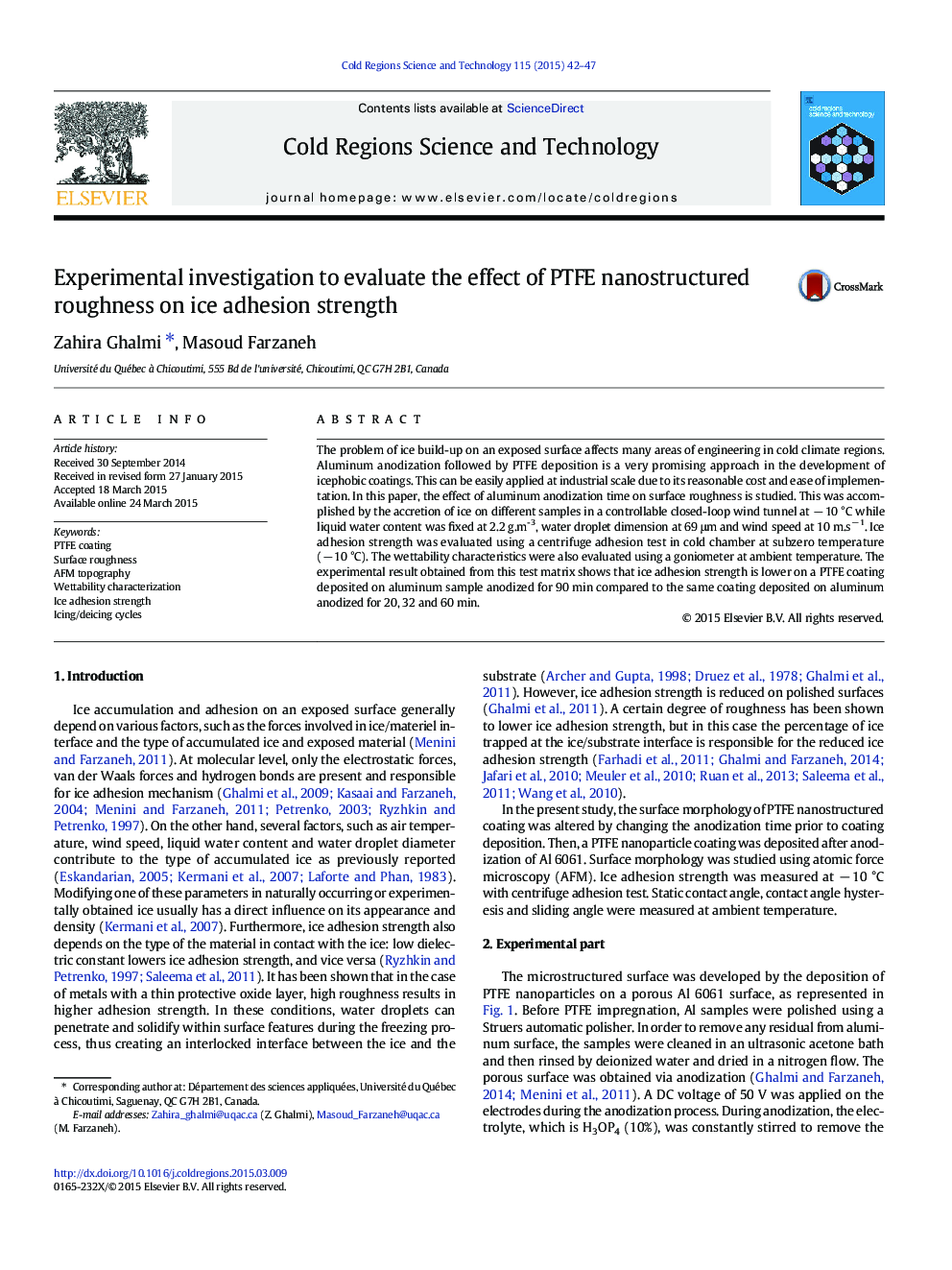| Article ID | Journal | Published Year | Pages | File Type |
|---|---|---|---|---|
| 6426839 | Cold Regions Science and Technology | 2015 | 6 Pages |
â¢Surface roughness generated by anodization of AA 6061 followed by PTFE impregnationâ¢The AFM analysis shows that surface roughness depends on anodization time.â¢A higher anodization time results in a higher surface roughness.â¢Lower ice adhesion strength was obtained for PTFE-based coating anodized at 90 min.
The problem of ice build-up on an exposed surface affects many areas of engineering in cold climate regions. Aluminum anodization followed by PTFE deposition is a very promising approach in the development of icephobic coatings. This can be easily applied at industrial scale due to its reasonable cost and ease of implementation. In this paper, the effect of aluminum anodization time on surface roughness is studied. This was accomplished by the accretion of ice on different samples in a controllable closed-loop wind tunnel at â 10 °C while liquid water content was fixed at 2.2 g.m-3, water droplet dimension at 69 μm and wind speed at 10 m.sâ 1. Ice adhesion strength was evaluated using a centrifuge adhesion test in cold chamber at subzero temperature (â 10 °C). The wettability characteristics were also evaluated using a goniometer at ambient temperature. The experimental result obtained from this test matrix shows that ice adhesion strength is lower on a PTFE coating deposited on aluminum sample anodized for 90 min compared to the same coating deposited on aluminum anodized for 20, 32 and 60 min.
